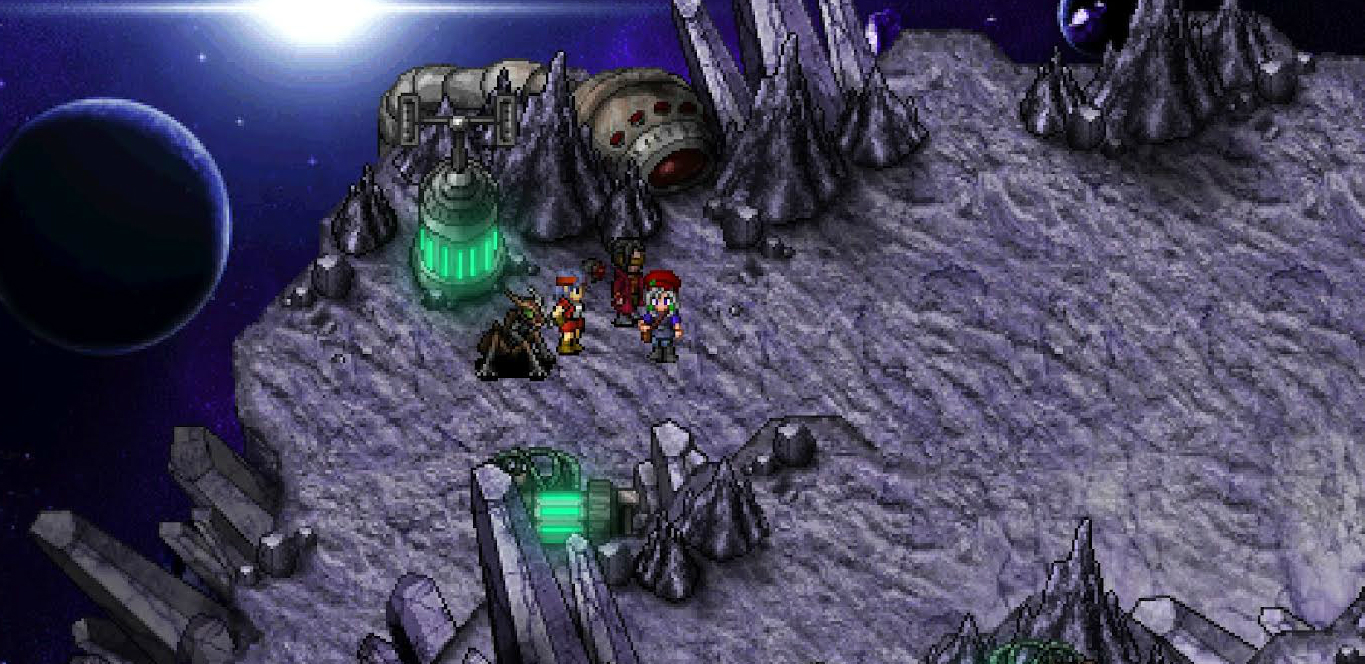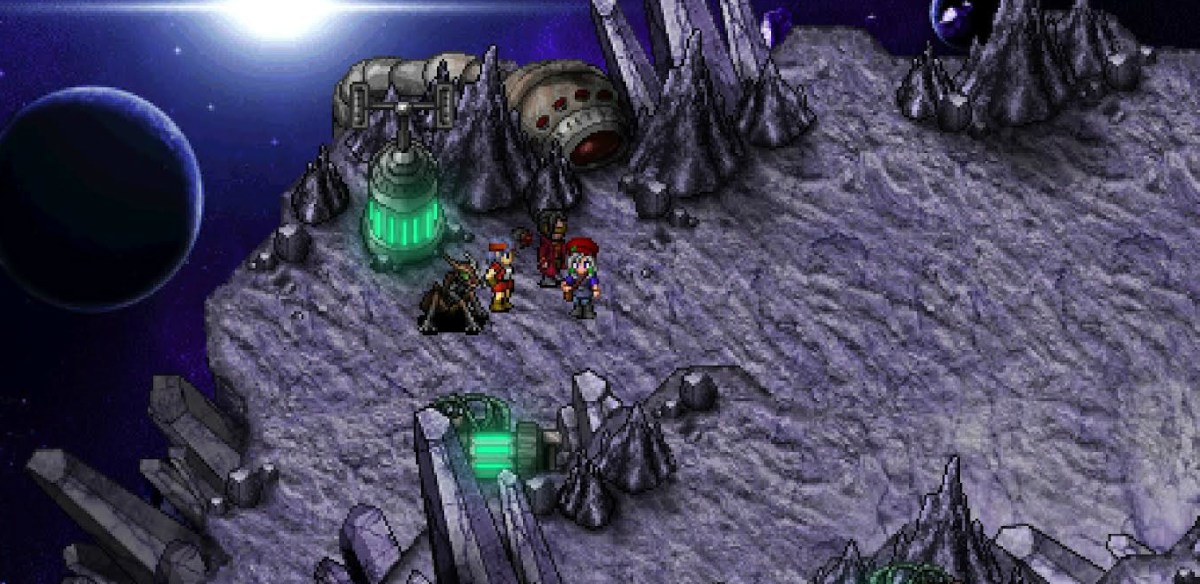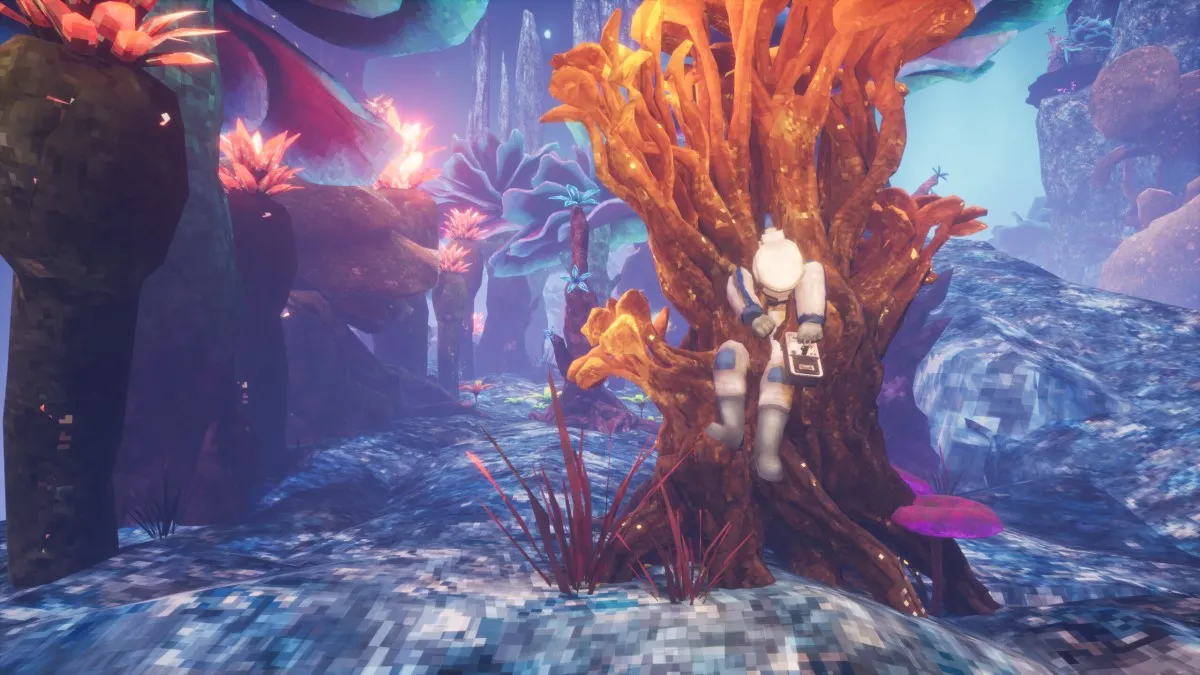Better late than never
Cosmic Star Heroine was successfully Kickstarted back in 2013, and was intended to be a throwback to latter-day 16-bit role playing games like Final Fantasy VI and Chrono Trigger. Originally intended for release in December 2014, the title has been delayed repeatedly, but finally released a couple of weeks ago for the PC and PS4. You might know the developers, Zeboyd Games, from their work on the Penny Arcade role-playing series, or their own titles on Steam and Xbox Live. Cosmic Star Heroine is a huge step up from Zeboyd’s earlier work, and it’s pretty clear to see why this game took a lot longer than their previous titles.
Unfortunately, the delays meant that Zeboyd released Cosmic Star Heroine in the middle of one of the biggest months for RPGs I’ve ever seen. Was it worth the wait?

Cosmic Star Heroine (PC [reviewed], Linux, Mac, PS4, PS Vita, Xbox One)
Developer: Zeboyd Games
Publisher: Zeboyd Games
Released: April 11, 2017 (PC, PS4) TBD (Vita, Mac, Linux, Xbox One)
MSRP: $14.99
Cosmic Star Heroine tells the story of Alyssa L’Salle, the top agent at the super-secret Agency for Peace and Intelligence. The graphics and gameplay are sort of a mashup of the greatest hits from ’90s Japanese Role Playing Games. Chrono Trigger is the biggest influence but there’s DNA in there from Final Fantasy X, Phantasy Star, Suikoden, and many others. The programmers are huge fans of JRPGs, and they got their start working together by making Dragon Quest knockoffs on Xbox Live’s Indie game showcase. There are plenty of references in Cosmic Star Heroine to their earlier titles, especially Breath of Death VII and Cthulu Saves the World.
This isn’t to say that Cosmic Star Heroine is derivative, far from it. There are a lot of new ideas here, and all of the playable characters are all extremely customizable. This makes combat a lot of fun, whether you choose to roll over everything on Tourist mode or play on Super Spy difficulty, where one slip-up can mean a party wipe.
There are lots of different systems at play in combat. Every few rounds, a character goes into a “hyper” state, and can do considerably more damage that round. Every attack is worth a certain amount of “style,” represented by a percentage under the character’s hit points. Using a “burst attack” drains the style meter completely but significantly increases the damage or healing dealt by that ability. You can also gain access to different abilities depending on the shield or weapon and items you have equipped. Additionally, a personalized accessory for each character can augment certain abilities or change how they work. Finally, there are three different enemy types (organic, robotic, and spectral) that have weaknesses to different elements and status effects. There’s a lot to keep track of, but somehow it never becomes overwhelming.
The four-person party is fully restored after every battle, so there’s no need for an inventory full of healing items and status cures. Each character has eight slots they can fill with earned abilities, and you can swap these any time you’re not in combat. With few exceptions, these abilities are used once per battle, though you can “refresh” all of one character’s abilities by sacrificing a turn. Figuring out which of the 11 playable characters’ abilities synergize best with themselves and the other party members is a lot of fun, and exploiting the many systems here to break the game over your knee is encouraged. Every character plays completely differently, and it’s an interesting challenge trying to figure out how to incorporate a mustachioed, hip-thrusting robot who gives the party bonuses by killing himself with a rookie cop who gets stronger the more he gets hit, or an insectoid alien who can kill enemies with a song.

Just like Chrono Trigger, battles play out on the same screen you do your exploring. You can see the turn order on the right side of the screen and plan your moves accordingly. Once defeated, enemies never respawn, but you can choose to replay battles from the pause menu if you feel like grinding for credits or experience. Late in the game Alyssa can equip a special shield that allows her to team up with other characters, but if you’re expecting characters to join together for triple and quadruple techs, you’ll be disappointed.
The story is reasonably well written and moves briskly, with plenty of humor thrown in. There are quite a few references to other games and pop culture, such as the Sonic Knuckles you can equip to make the bruiser character move faster, or the Resident Evil-inspired side mission you can undertake in a zombie-filled police station. The plot’s not too dark for kids, though there are a lot of implied, off-screen deaths. Each of the characters has their own personality, and they’re all pretty likable. Some are more unique than others, but I didn’t have any problem putting the green-haired pop idol and the ghostly private investigator in a portly cybersuit on the same team.

The music is definitely worth a mention. Composed by HyperDuck Soundworks, the audio perfectly evokes the late ’90s sci-fi feel the game is aiming for. There are plenty of synthesizers, saxophones, and wailing guitars, and even a mixed language vocal track performed by Plants Vs. Zombies’ Laura Shigihara. Like Jordan said, the soundtrack is not messing around.
As much as I liked the audio, the visuals are just as good, if not better. There are three wildly different planets to visit, each with their own architecture, vegetation, and people to talk to. The spritework on display is extremely impressive, especially when you consider that most of the enemies you encounter only appear a few times each. There aren’t a lot of palette-swapped goblins here, and every area you visit has a different ecosystem. On the harder difficulty levels, you’ll constantly have to adjust your tactics as new combinations of enemies come into play. Since you automatically heal after every fight, every battle becomes a new puzzle to figure out.

It’s not all starshine and kittens, though. I really wanted to love this game, but it got in its own way far too often for me to give it an unqualified recommendation. I ran into a lot of bugs, and I’m not just talking about the Cyber-insect party member. My first crash came just 20 seconds in when I changed from windowed mode to fullscreen. Not the best first impression. On more than one occasion the combat froze after I entered a command, and each time this happened I had to reset. I lost about an hour and a half of progress the first time this happened because I didn’t realize there was no autosave. After clearing that section, my character got stuck in the scenery on the side of a corridor, forcing another reset. I ran into three or four places like this before I learned to save frequently and to avoid running alongside walls, but that took a lot of fun out of searching for secrets.
There are a few other annoyances I came across; nothing major, but they all detracted from the experience in some way. There’s a run button, but there’s really no reason not to run at all times, so I don’t know why this couldn’t have been a toggle. You can pass through non-player characters freely, presumably so that you don’t need to worry about getting trapped by one. In order to talk or interact with someone, you need to be close, which makes sense. But if you get TOO close, the option to speak with that NPC disappears. I suppose it would be difficult to talk to someone while you were standing inside them.

Later in the game, you gain access to a home base, like the castle in Suikoden. Whenever you’re on this base, the rest of your party spreads out so that you can talk to them, similar to the Normandy sections in Mass Effect. The only problem with this is that the shop on the base frequently updates its inventory, and it’s hard to tell what’s an upgrade because whenever you’re there, Alyssa is the only character in the party. Unless you just want to buy some gear on faith, you have to leave the base to compare their current equipment to what’s available at the store. Again, these are minor annoyances, but I feel that stuff like this breaks the flow of the game.
Playing through took me about 12 hours, though it might take more or less time if you bump up the difficulty or stick to the critical path. None of the problems I had with this game are insurmountable, and I’m hoping that Zeboyd will be able to fix them with an update. In spite of the bugs, I enjoyed exploring the galaxy with Alyssa and her crew, but you may want to wait for a patch or two before mainlining this Heroine.
[This review is based on a retail build of the game provided by the publisher.]





